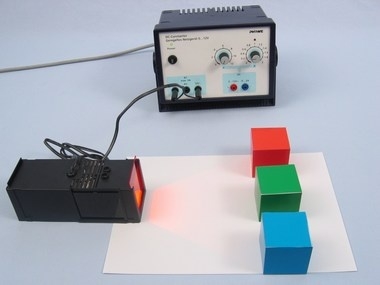
|
|
||||||||||||
|
Technical data Colours of objectsArticle no: P1066600

Principle Objects in our environment possess different colours. In
addition they appear different in the light of evening sun than
when the it is high in the sky. Benefits
Tasks Why do objects have different colours? Illuminate objects with light of different colours and investigate the changes which take place. Scope of delivery
|
||||||||||||
|
|
Robert-Bosch-Breite 10 – 37079 Göttingen – Germany
www.phywe.com

